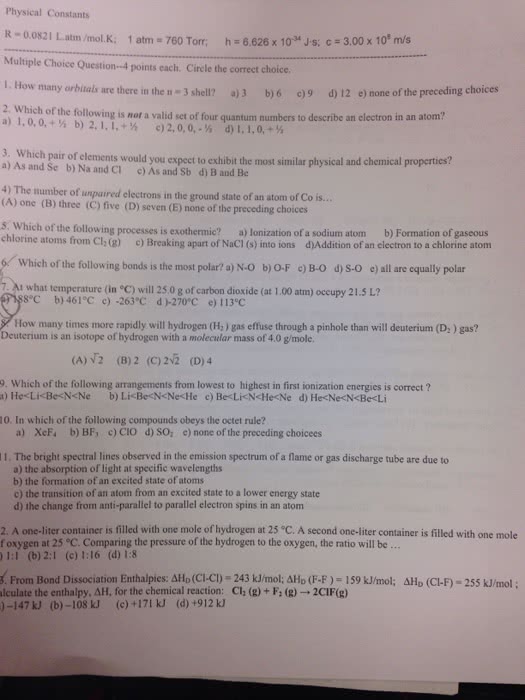CHEM 151 Lecture Notes - Lecture 12: Formaldehyde, Methanol, Abc Comedy
37 views1 pages
5 May 2017
School
Department
Course
Professor
Document Summary
A common signature of a chemical change is the release or absorption of energy. Energy is needed to separate a pair of bonded atoms. The energy provided is transformed into potential energy of the separated atoms. Heteronuclear bonds are stronger than homonuclear bonds (hydrogen is an exception h-h) A-a + b-b 2 a-b (weak bonds to stronger bonds = exothermic reaction = net energy release) 2 a-b-c 2 a + 2 b + c-c (endothermic reaction = stronger bonds to weaker bonds) Ch2o + o2 co2 + h2o (formaldehyde combustion) Ch4o + 1. 5 o2 co2 + 2 h2o (methanol combustion) Heat of reaction h is the difference in energy between bonds broken and bonds formed (exothermic is negative, endothermic is positive) Methane (least oxidized) methanol formaldehyde (most oxidized) Oxygen double bond is relatively weak bond, while the co (double bond) and oh bonds are strong.
Get access
Grade+
$40 USD/m
Billed monthly

Homework Help
Study Guides
Textbook Solutions
Class Notes
Textbook Notes
Booster Class
10 Verified Answers
Class+
$30 USD/m
Billed monthly

Homework Help
Study Guides
Textbook Solutions
Class Notes
Textbook Notes
Booster Class
7 Verified Answers
Related textbook solutions
Chemistry: Structure and Properties
2 Edition,
Tro
ISBN: 9780134293936
Basic Chemistry
5 Edition,
Timberlake
ISBN: 9780134138046
Principles of Chemistry Molecular Approach
4th Edition,
Tro
ISBN: 9780134112831
Chemistry: Structure and Properties
2nd Edition,
Tro
ISBN: 9780134293936
Principles of Chemistry Molecular Approach
3rd Edition, 2014
Tro
ISBN: 9780321971944
Chemistry: A Molecular Approach
3rd Edition,
Tro
ISBN: 9780321809247
Chemistry: A Molecular Approach
5th Edition,
Tro
ISBN: 9780134874371
Principles of Chemistry: A Molecular Approach
4th Edition,
Tro
ISBN: 9780134895741
Chemistry: The Central Science
14th Edition, 2017
Brown
ISBN: 9780134414232



